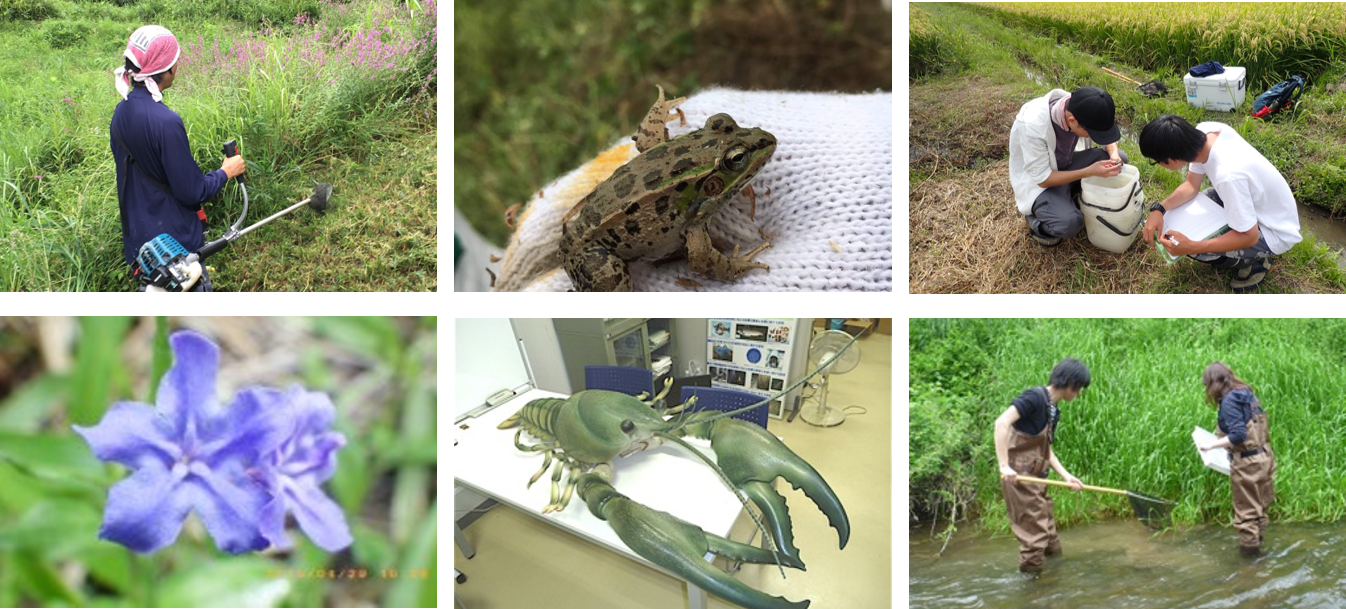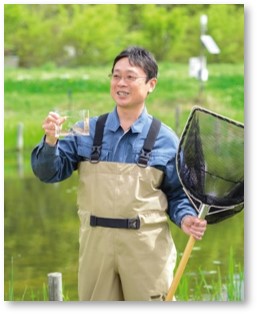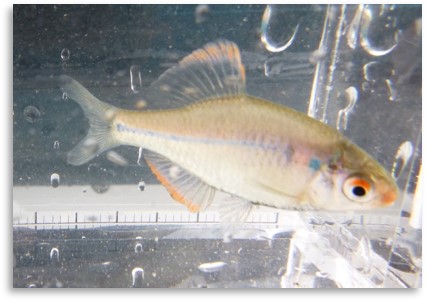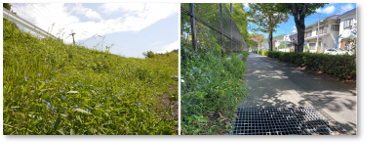Applied Ecology

In the last few decades, biodiversity loss has been a big issue all over the world. As you know, human activities are one of the most primary factors, which modify the natural habitats of animal and plant species, cause the decline of their population, and sometimes completely make them extinct. To live as a well-behaved passenger on the future earth, we first need to understand the relationship between biodiversity and human activities. In our laboratory, we study for and actually perform for conservation and appropriate management of biodiversity. And, we believe these should be done based on accurate knowledge about biology, ecology, and environmental science. We are targeting various taxa, such as endangered fishes, invasive crustaceans, and native herbaceous plants.
 |
|
|---|
Many native species of freshwater animals are endangered due to factors such as the negative effects of river or agricultural channel improvements and predation or competitive exclusion by invasive species. To conserve such endangered native freshwater animals, we have to clarify the basic ecology (e.g., reproductive behavior and habitat preference) and then develop effective conservation methods. In our recent studies, we clarified the habitat preference of the endangered bitterling fish species (Rhodeus atremius suigensis) in agricultural channels, and wintering site environment of the endangered Nagoya Daruma Pond Frog (Pelophylax porosus brevipodus) inhabiting paddy fields. Also, we have studied the effectiveness of restoration methods in agricultural channels for freshwater fish conservation.
 |
|
|---|
From now and probably in the future, land-use change has been thought to be the most severe driver of changes in biodiversity. Urbanization, which is intensifying human impacts, is a major driver of habitat loss for plants and pollinators. Our study species, Commelina communis, is largely distributed from rural to urban areas while many habitats of native plant species are lost related to urbanization. We are now examining what determines whether the plant species is as robust or vulnerable to human impacts by focusing on plant mating systems and plant-pollinator interaction.


